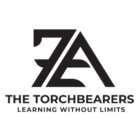FST MCQs Set 5
1. Chapter 4 of Punjab Food Authority Act deals with?
a) Enforcement Mechanism
b) Offences and Penalties
c) Audit and Finance
d) Establishment of Food Authority
2. For building nerve tissues of infants, which of the following proves to be essential?
a) Sucrose
b) Fructose
c) Galactose
d) All of these
3. Mother's milk contains which bacterial genus/species?
a) Streptococcus
b) Bifidobacterium
c) Lactobacillus bifidus
d) All of these
4. The nutritional needs of boys and girls are the same till the age of about … after which the requirements differ?
a) 8 years
b) 9 years
c) 10 years
d) 11 years
5. The greatest nutrient needs for boys are between …. and for girls are …. respectively?
a) 12-15 years & 10-13 years
b) 9-12 years & 11-13 years
c) 8-12 years & 12-15 years
d) None of these
6. The average calorie requirements for a sedentary adult man are:
a) 3400 kcal
b) 2800 kcal
c) 2400 kcal
d) 2000 kcal
7. For both men and women, how much protein is required per kg body weight?
a) 500 mg
b) 800 mg
c) 1000 mg
d) 1200 mg
8. Sarcopenia is:
a) Bones deformity
b) Fracture in bones
c) Muscle fatigue
d) Muscle Atrophy
9. Diets relatively low in saturated fats reduce the risks of:
a) Hypertension
b) CVD
c) Cancer
d) All of these
10. A severe protein malnutrition results in a disease known as:
a) Rickets
b) Kwashiorkor
c) Osteoporosis
d) Osteomalacia
11. Globally, widespread micronutrients deficiencies are:
a) Iron Deficiency
b) Vitamin A Deficiency
c) Iodine Deficiency
d) Zinc Deficiency
e) All of these
12. The bacteria responsible for dental caries is:
a) Streptococcus mutans
b) Streptococcus thermophilus
c) Lactobacillus lactis
d) Bifidobacterium
13. A man is considered obese if his total body fat exceeds …. of his body mass while in woman if it exceeds …. then a woman is obese:
a) 20% & 30 %
b) 10% & 20%
c) 15% & 22%
d) None of these
14. In females, if body fat falls below 8%, this may result in
a) Amenorrhea
b) Dysenty
c) Epilepsy
d) Migraine
15. After 40 years of age, both men and women begin to lose bone mass. This statement is:
a) True
b) False
c) Equivocal
d) Both A & B
16. Four systems for food service are:
a) Profit Maximization
b) Procurement of materials
c) Cost Analysis
d) None of these
17. Factors affecting meals in Food Service & Operations Management are:
a) Level of cleanliness & hygiene
b) Atmosphere of the establishment
c) Level of service
d) All of these
18. The recommended diet for patients suffering from cancer is:
a) Diet high in PUFA
b) Low fat diet
c) High fibre plant based diet
d) Both B & C
19. Type-1 Diabetes is also known as:
a) Juvenile Diabetes
b) Non-Insulin Dependent Diabetes
c) Insulin Dependent Diabetes
d) Both A & C
20. Diabetics are recommended to consume foods rich in dietary fibre. This statement is:
a) True
b) False
c) Probably False
d) None of these
21. Risk factors for CVD are:
a) Emotional stress
b) Cigarette Smoking
c) Exercise, diet & Obesity
d) Only C
e) All of these
22. What is Succus entericus?
a) Name of Plant
b) Chronic form of Cancer
c) Type of colitis
d) Intestinal Juice
23. Vitamin D helps the body in proper utilization (absorption & metabolism) of:
a) Calcium
b) Phosphorus
c) Iron
d) Both A and B
24. Which of the following Vitamin is anti-hemorrhagic?
a) Vitamin K
b) Thiamine
c) Vitamin A
d) Vitamin D
25. Beta-Carotene is a precursor of:
a) Rennet
b) Rennin
c) Retinol
d) Ribosomes
